 |
 |
 |
| |
HCV TRANSMISSION AMONG MSM: EXTERNAL
INTRODUCTIONS COULD COMPLICATE MICRO-ELIMINATION
|
| |
| |
CROI 2020
Reported by Jules Levin
http://www.croiwebcasts.org/console/player/44804?mediaType=slideVideo&
CROI: Summary from virtual CROI 2020 for HIV and liver disease HIV and the liver: what is new? - Written by Jurgen K. Rockstroh M.D., Professor of Medicine University of Bonn, Germany (03/25/20)
Jelle Koopsen1, Edyth Parker1, Colin Russell1, Thijs J. Van De Laar2, Elske Hoornenborg3, Marc Van Der Valk1, Janke Schinkel1
1Academic Medical Center, Amsterdam, Netherlands,2OLVG, Amsterdam, Netherlands,3Public Health Service Amsterdam, Amsterdam, Netherlands
Program Abstract
Elimination of HCV has become a target with the introduction of highly effective direct antiviral agents (DAAs). In the Netherlands, new HCV infections including frequent reinfections almost exclusively occur in MSM. It is unclear whether unrestricted access and high uptake of DAAs is sufficient to eliminate HCV in high-risk populations such as MSM. This study presents historic trends and current dynamics of HCV among MSM in Amsterdam based on sequence data collected between 1994 and 2019.
HVR1 sequences of 232 primary HCV infections and 56 reinfections were obtained from 244 MSM in care in Amsterdam. Maximum-likelihood phylogenies were constructed for each HCV genotype separately, and time-scaled phylogenies were constructed using a Bayesian coalescent approach. Transmission clusters were determined by Phydelity, which utilizes a statistically-principled and phylogeny-informed framework. The proportion of unclustered sequences over time was calculated using year-specific transmission trees inferred from sequences up to that year.
For subtype 1a (n=191) we found 19 transmission pairs and 12 transmission clusters ranging from 3 to 8 sequences. Transmission clusters of subtypes 2b (n=18) and 3a (n=17) were introduced more recently than clusters of subtypes 1a and 4d (n=62). For subtype 1a and 4d, clusters were introduced between 1998 and 2011, whereas for subtype 2b and 3a this was between 2009-2012. The estimated transmission rate (based on genetic diversity) increased around the year 2000 and plateaued 10-15 years later for subtypes 1a and 4d. The proportion of unclustered sequences of subtype 1a, the most prevalent subtype in this population, increased from approximately 40% before 2014 to about 75% in more recent years.
The proportion of unclustered sequences has increased among HCV infections in recent years. The most likely explanation for this is that transmission of local strains has declined as a result of intense treatment efforts whereas external (possibly international) introductions of HCV into the MSM population in Amsterdam has increased. Frequent international transmission events will complicate national micro-elimination efforts and therefore international collaboration combined with international scale-up of treatment of all diagnosed HCV infections (including reinfections) is important.
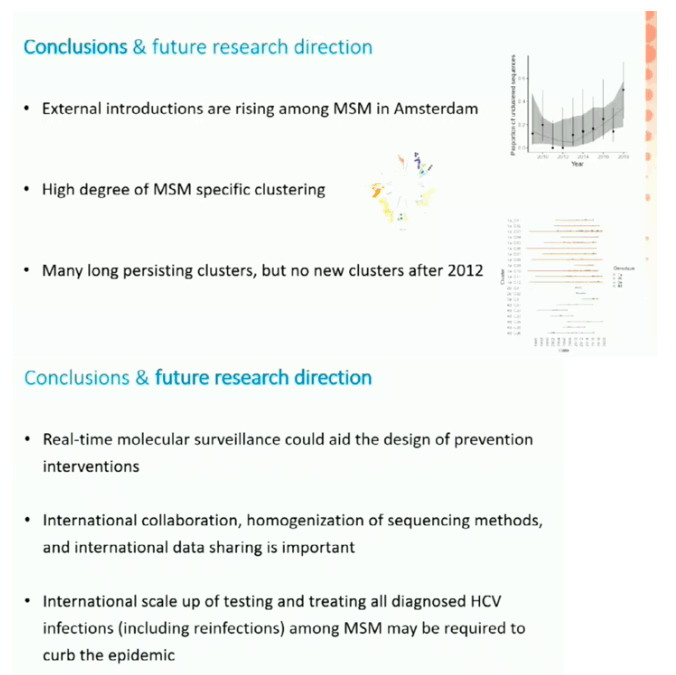
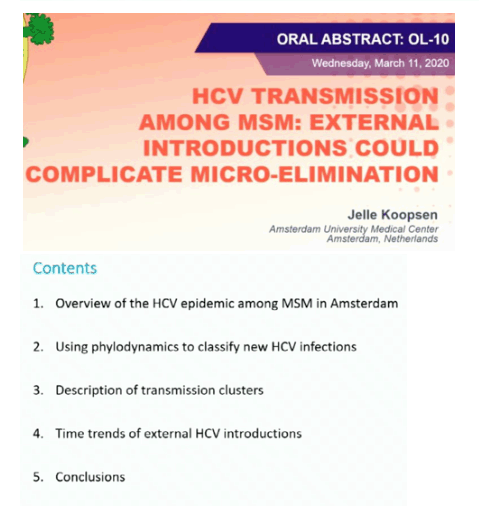
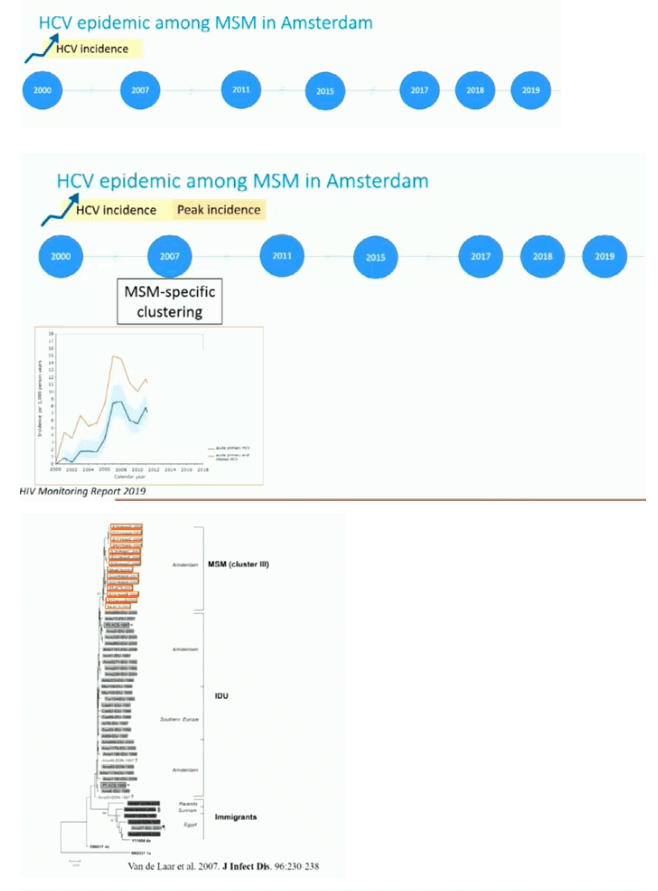
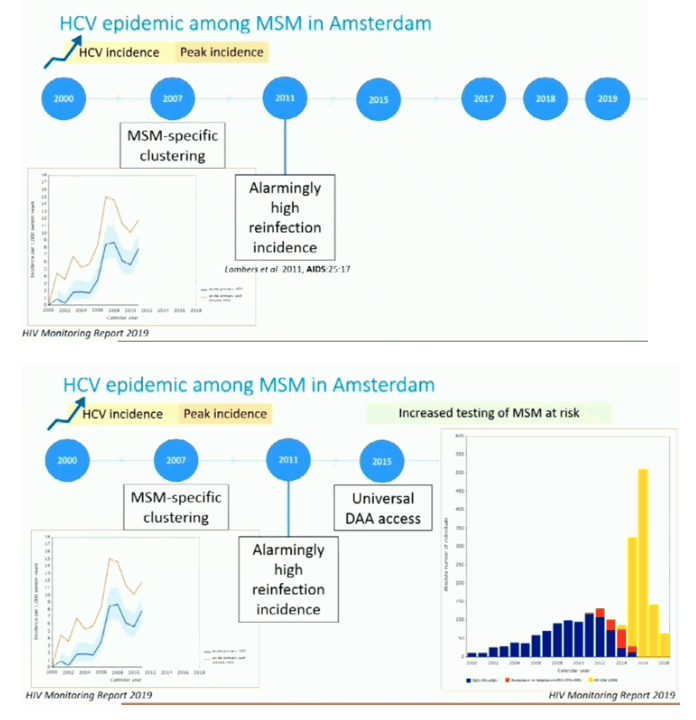

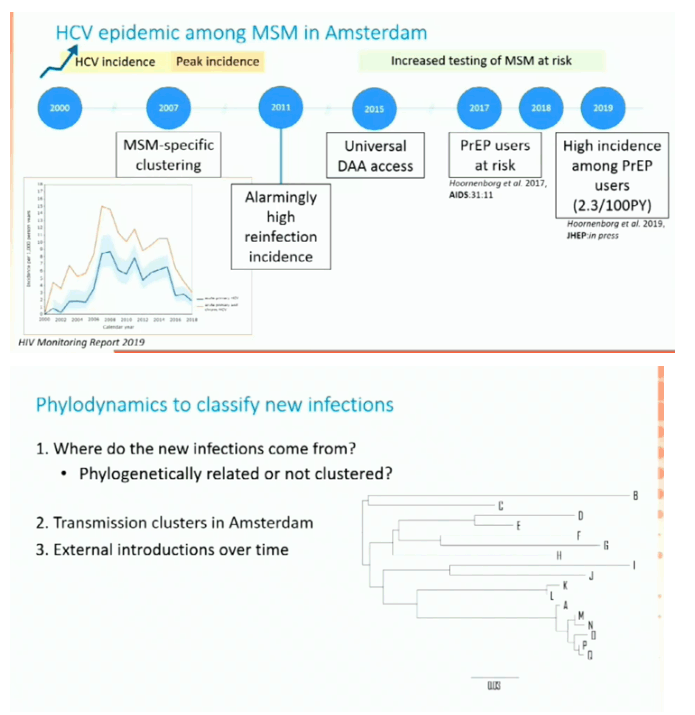
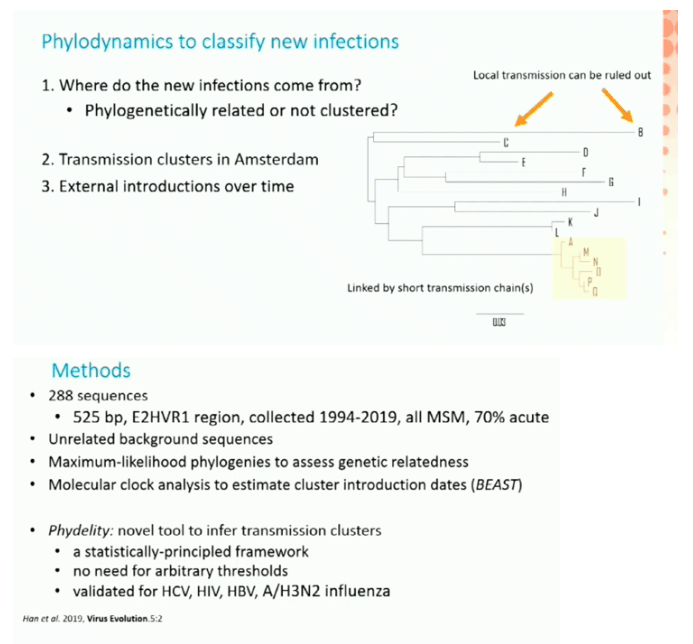
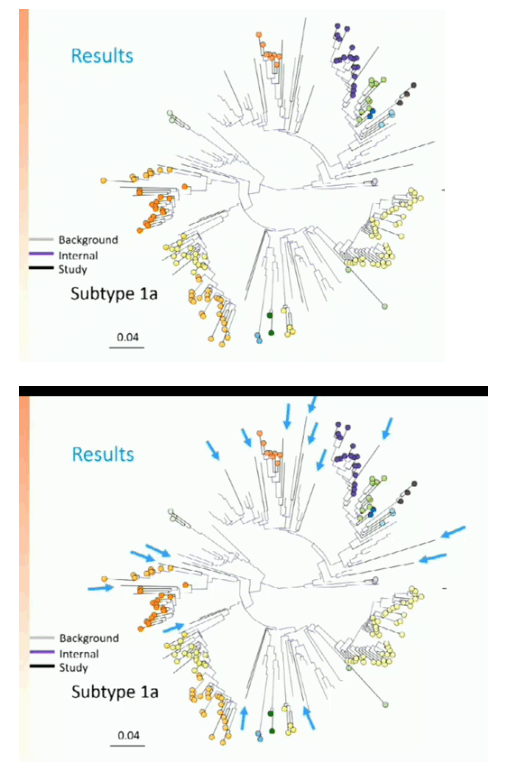
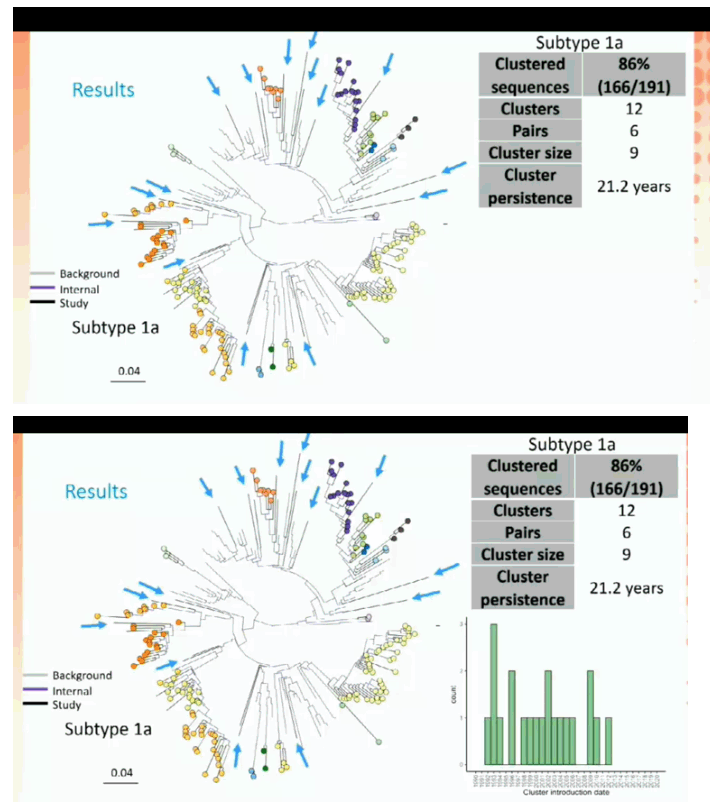
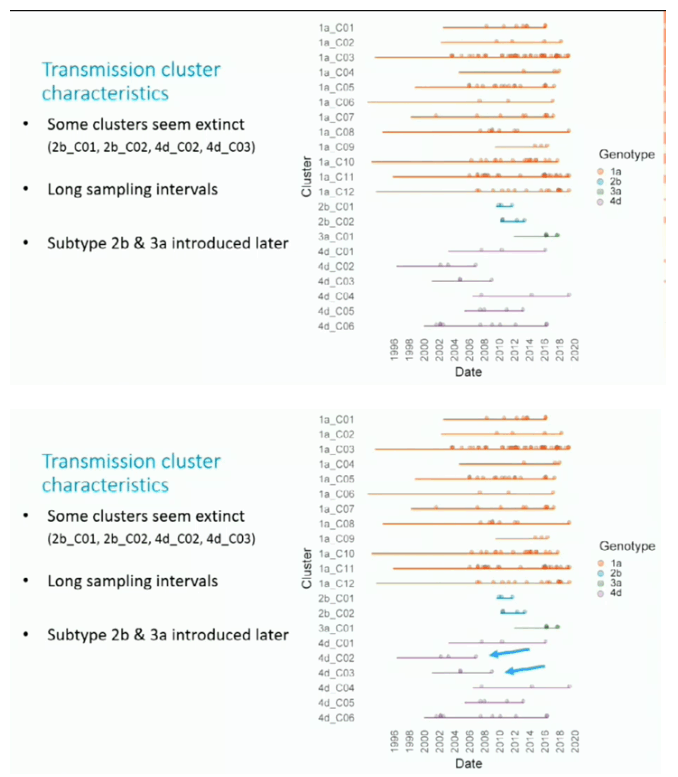
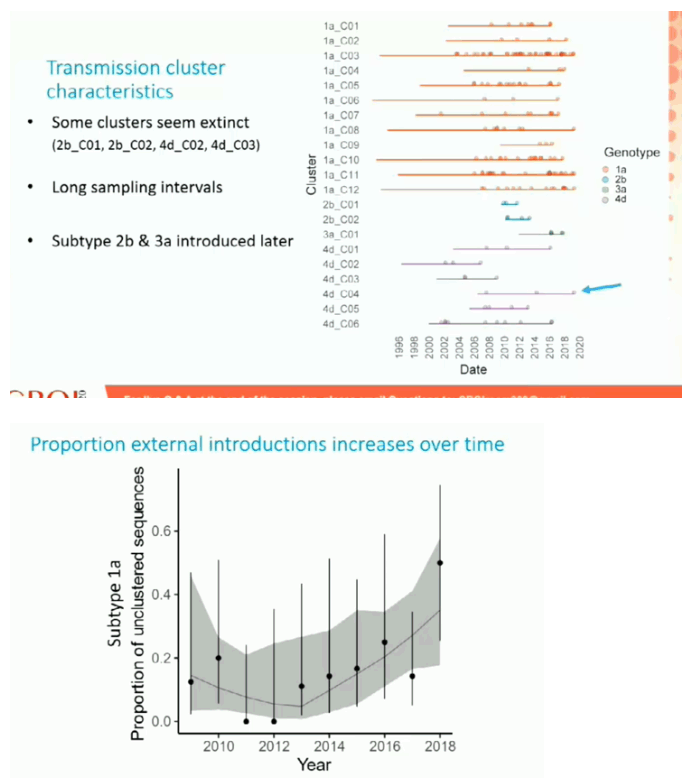

|
| |
|
 |
 |
|
|